Photos: The World's Weirdest Geological Formations
Weird Geology
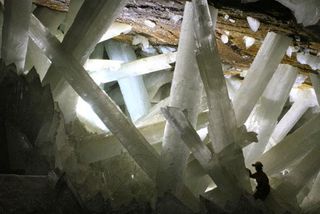
The remnants of a 2-billion-year-old nuclear reactor and a cave of house-sized crystals might seem too strange to be natural, but the world is apparently full of such bizarre natural phenomena. Here are 10 of the weirdest geological structures on the planet.
Cave of the Crystals, Mexico

The otherworldly crystals in the Cave of the Crystals in Mexico can reach sizes larger than houses, by far the largest such crystals known on the planet. They apparently grow at incredibly slow rates, gypsum formations that take as long as a million years to reach more than two stories tall. Researchers speculate that microscopic pockets of liquid within these giant crystals might hold microbes.
Eye of the Sahara, Mauritania

The Eye of the Sahara in Mauritania, also known as the Richat Structure, resembles a bull's-eye 30 miles (50 kilometers) wide. The mysterious formation is large enough for early space missions to have used it as a landmark. Scientists think it is the result of uplifted earth worn down over time by wind and water, with different rates of erosion on the varying rock types forming concentric ridges.
Giant's Causeway, Northern Ireland

The Giant's Causeway in Northern Ireland consists of more than 40,000 interlocking volcanic rock pillars, most of which are hexagonal, although some have fewer or more sides. Legend has it that the giant Finn McCool fashioned the Giant's Causeway to walk across the sea to Scotland and face his great rival Benandonner. Researchers say it was created by lava traveling out of cracks in the earth 60 million years ago, which cooled over time into a honeycomb pattern, with some pillars standing as tall as 36 feet (12 meters).
Sailing Stones of the Racetrack Playa in Death Valley, Calif.
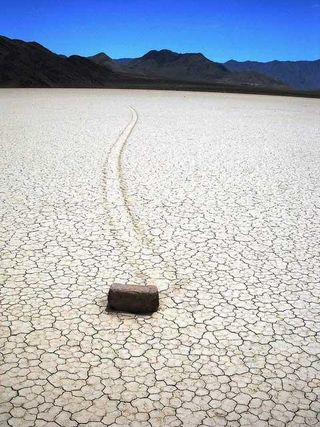
The sailing stones of the Racetrack Playa in Death Valley seem to strangely move on their own, leaving long trails behind them in the cracked clay. NASA research suggests that during the winter months, ice forms around the rocks, perhaps allowing them to slip across the frozen surface of the playa.
Ice Towers of Mount Erebus, Antarctica
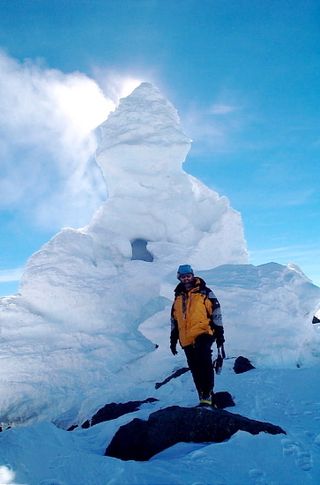
Antarctica's Mount Erebus, an active volcano that rises 12,448 feet (3,794 meters) above the Earth's surface, is home to giant, hollow towers of ice. These form when fumaroles cracks in the Earth's crust that vent hot gas spew steam into the open air, which is so cold in the Antarctic that it freezes the steam in place, creating chimneys up to 30 feet (10 m) tall.
The remnants of the Oklo natural nuclear reactor, Gabon
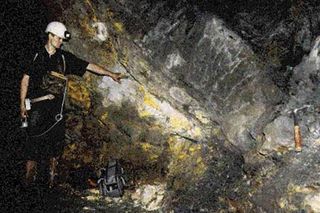
Not all nuclear reactors on Earth are manmade some arise naturally. The Oklo mine in the West African nation of Gabon was once home to a natural nuclear reactor that apparently spontaneously turned on 2 billion years ago, running on uranium fuel. It seems to have lasted about 150,000 years with an average power output of 100 kilowatts, radiating the energy equivalent of 100 megaton bombs over its lifetime.
The Eisriesenwelt ice cave, Austria

The Eisriesenwelt German for "world of the ice giants" is the largest known ice cave in the world. The limestone cavern stays cold enough year-round to freeze any water inside. This leads to gigantic ice formations growing within.
The Tessellated Pavement of Eaglehawk Neck, Tasmania
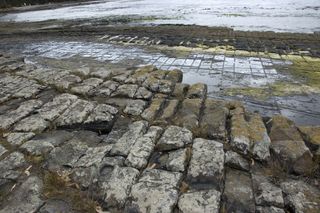
One might easily wonder if the unusual grid of the Tessellated Pavement of Eaglehawk Neck, Tasmania, is completely unnatural. Apparently, this rare geological feature formed when the underlying siltstone cracked in blocks resembling tiles, possibly between 60 million and 160 million years ago. When seawater covers the platform, sand and wave action erodes the rock. The surface of the stone can erode faster between the rims of the tiles than on the rims themselves.
Pamukkale, Turkey

Pamukkale, which means "cotton castle" in Turkish, is found in the mountains of Turkey. It may resemble a glacier, but the site is actually bathed in hot water. The mineral-rich waters of the area's hot springs have over time formed dazzling white limestone terraces.
Fingal's Cave, Scotland
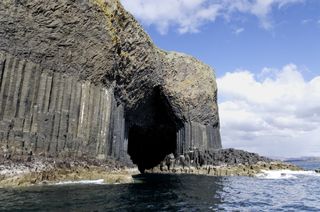
Fingal's Cave is a cathedral-like sea cave that stretches about 250 feet (75 meters) into the rock on the island of Staffa off the west coast of Scotland, with a roof about 70 feet (20 m) above the sea. It formed within lava flows that cooled to form hexagonal columns. The cavern inspired Mendelssohn's Hebrides overture and attracted celebrity tourists of the Victorian era such as Jules Verne, William Wordsworth, Alfred Lord Tennyson and Queen Victoria herself.
Sign up for the Live Science daily newsletter now
Get the world’s most fascinating discoveries delivered straight to your inbox.

